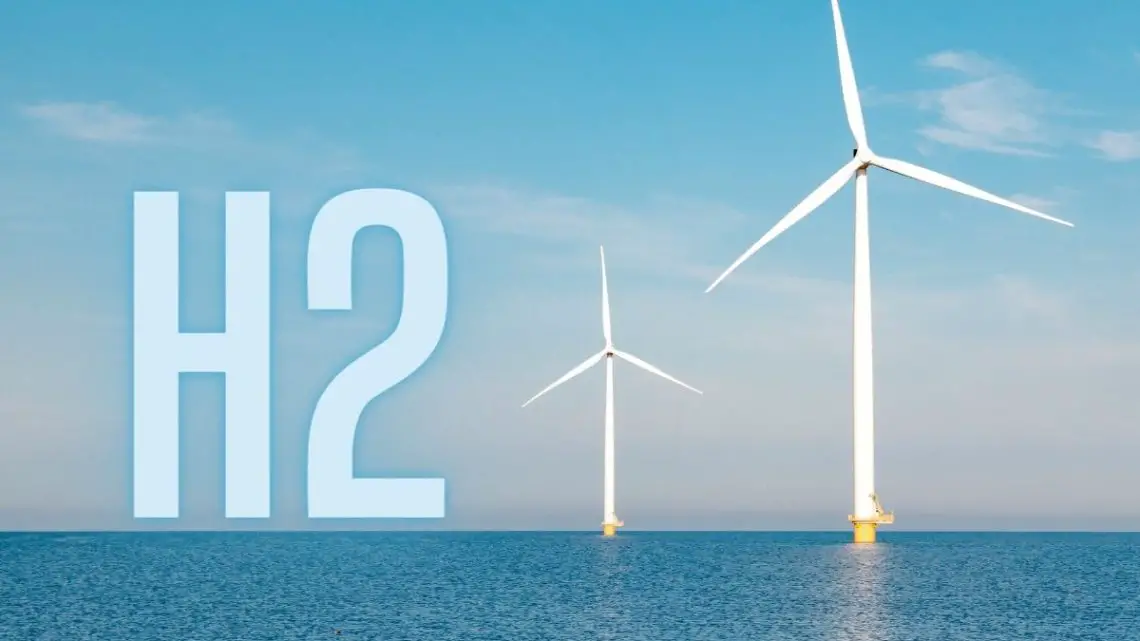
Renewable hydrogen production uses old tech in novel way
June 17, 2023A wind-to-H2 project is validating a production process first conceptualized in the 1970s.
The first platform-based wind-to-H2 deep water renewable hydrogen electrolysis plants have made their way offshore in recent weeks, making it possible to prove concepts first developed half a century ago.
Using wind turbines to power green H2 production isn’t a new idea, but this particular version is.
Using deep sea platform technologies to take advantage of stronger winds than those blowing closer to shore was first conceptualized in the 1970s during the energy crises. At that time, the first wind power engineering program in the United States addressed Congress, saying that turbines could eliminate the country’s reliance on imported energy.
William Heronemus, a professor of engineering from the University of Massachusetts envisioned offshore wind turbines generating electricity that could power seawater electricity for the storage of that energy as renewable hydrogen fuel. It took about fifty years, but that vision is now in development from several angles.
Projects developing platform technologies for massive wind turbines have become commonplace and are well underway, broadening the access offshore wind has to the stronger winds that blow over deeper waters.
Most recently, platform-based renewable hydrogen electrolysis plants are moving offshore.
Many countries are leaning on the power of offshore wind for electricity production and the flexibility of renewable hydrogen to store that energy in order to meet climate targets while establishing energy security. Nations with access to deeper waters are discovering the potential cost and operational advantages of this combination.
In May, an H2 producer from France, towed the first floating renewable hydrogen production platform to a test site about 12.5 miles (20 kilometers) off the coast of Normandy.
Last year, the Nantes-based company Lhyfe started the operation of the 1-megawatt platform in the Port of Nantes Saint-Nazaire using shore power, for the production of a daily 400 kilograms of green H2. That company is now slated to launch a 2-megawatt floating wind turbine at the SEM-REV offshore energy test site in France.
Earlier this month, reports in China’s state media indicated that researchers had similarly established an H2 production platform connected to a wind farm located off Fujian Province’s coast.
Almost a dozen different wind powered, floating H2 electrolysis demonstration projects are already on the go in European, Scandinavian, and Japanese waters, according to current estimates.
Offshore, deep water renewable hydrogen offers advantages
Using powerful wind energy as a source of electricity for renewable hydrogen production has considerable advantages over land-based projects. In fact, according to Stéphane Le Berre, Offshore Project Manager at Lhyfe, among the main drivers behind the pursuit of these projects is anticipated cost reductions and risk-aversion.
Using offshore wind power – particularly in deeper water where wind is stronger – provides countries with an abundant renewable energy source combined with notable flexibility that aligns with energy security and climate targets.
“A hydrogen production plant plus pipeline is five to 10 times cheaper, as an investment, than an electric substation plus a cable,” pointed out Le Berre, whose company now has three 5-megawatt plants under construction and is currently developing projects in Denmark and Sweden that are larger than 100-megawatts.
Challenges remain
Despite the extensive potential of wind-powered electrolyzers for renewable hydrogen production, particularly over deeper waters, there remain certain notable challenges that must be overcome before large-scale systems roll out. Among the preparations that must be made include water treatment for using sea water for electrolysis.
Moreover, renewable hydrogen produced in this way will also face struggles relating to weather and competition for vessels, which could cause the offshore platforms to be difficult – or even impossible – to access for weeks or months at a time. This could make it impossible to conduct necessary monthly cleanings of the reverse-osmosis filters.
Still, companies are pushing forward to overcome those goals. For instance, Lhyfe has added tech for both the prevention and removal of fouling to greatly reduce the need for routine cleanings.
“We had to design the systems so that for approximately six months, there is no maintenance, no operations required,” explained Le Berre.
That way, the renewable hydrogen production can continue throughout extreme weather that would make the platforms inaccessible. The company is continuing to test and adapt, to best understand what works and what changes are required.



 With over 15 years of reporting hydrogen news, we are your premier source for the latest updates and insights in hydrogen and renewable energy.
With over 15 years of reporting hydrogen news, we are your premier source for the latest updates and insights in hydrogen and renewable energy.
If rough seas are an issue for floating platforms, why not just submerge it. Much quieter down there…
Just a thought.